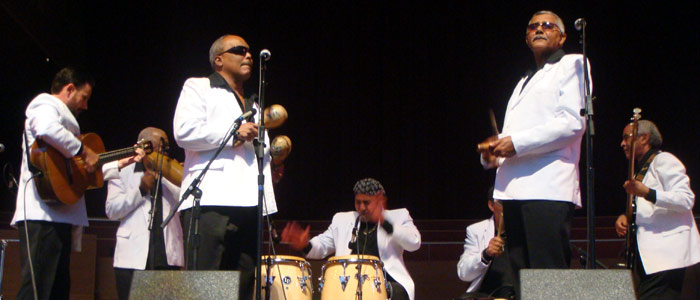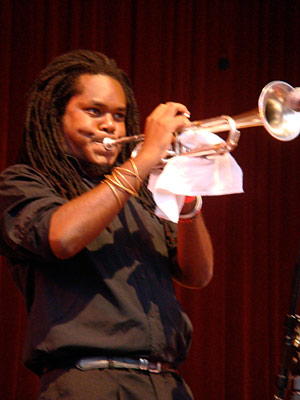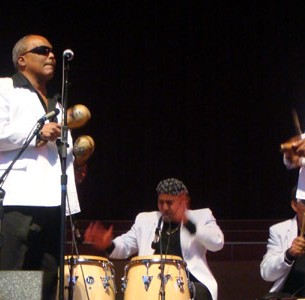
Photography by Catalina Maria Johnson
“We were all also young at the time! And for the first time in a while, young people related to the classic Cuban son, which had been a little forgotten and considered to belong to a past generation,” says Eduardo Himely (bass and conga player as well as Director of the group Sierra Maestra) speaking by phone from Havana, Cuba. Himely is one of the founders of the veteran nine-member ensemble which has taken the classic Cuban son to listeners world-round for several decades.

Himely continues to describe how the group was founded in the seventies by several students at the University of Havana, of whom only one was a music student – the rest were studying engineering and technology. They loved the classic son traditions of their land and called the group “Sierra Maestra” because it was in that region that the son had been born. Himely explains that what he considers the precursor to the son, another Cuban genre named “changui,” emerged in the mountains of Oriente (the most eastern part of Cuba) in the nineteenth century, with an instrumental configuration of tres (small guitar-like instrument with three sets of two strings) one bongo, some percussion and occasionally the marimbola (an african-rooted instrument, a resonating box with metal thongs that looks like a huge mbira). Changui merged with other traditions from Oriente, and the son reached Havana sometime after 1915, giving rise to the first septets which in the citified version added other instruments such as trumpets and bass.
Played by septets in Havana such as the Septeto Nacional and Septeto Habanero, classic Cuban son had an enormous heyday in Cuba and Latin America for decades throughout the twenties through the forties, but was considered “oldies” music until Sierra Maestra shared it with a younger generation that embraced it and made it all new again. I wonder what made the son reach Cuban youth at the time, and Himely answers: “It has such a special rhythm and cadence, so danceable and with so much fiesta, that it just reaches everyone.”
In the nineties, the erstwhile engineering students and their fellow band-mates finally dedicated themselves totally to the music. Today’s Sierra Maestra (which includes five of the original founding members) continues to play classic son cubano in the traditional instrumental configuration. The ensemble has received numerous awards and recognitions, toured around the world too many times to count, recorded fourteen albums and been featured in over forty compilations.
However, the band is not content to rest upon its laurels. They want to be considered not just preservers and custodians but innovators of the tradition as well. Recognizing that it is time again to reach out to another generation, for their latest CD, Sonando Ya, they invited young Cuban songwriters to create lyrics within the traditional structures of the classic son that could touch the hearts of a new generation. If recent concerts are any indication, they have no doubt succeeded.
—
Sierra Maestra performs two concerts (7 and 10PM) at Old Town School of Folk Music March 24.
Check out Catalina’s blog and the archives of her radio show/podcast Beat Latino ( Like Beat Latino on FB too!) to explore the roots as well as trends in Latin musical arts.
